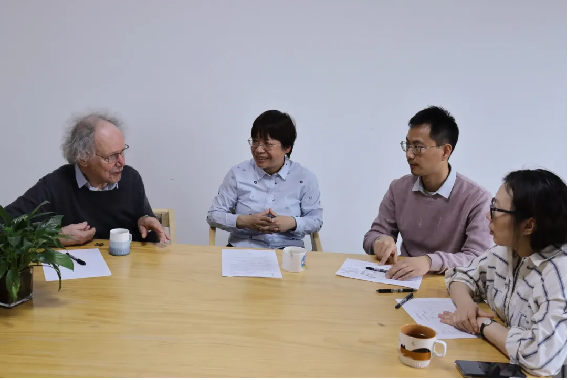The Chinese chestnut scientific research innovation team of our horticulture discipline has recently published an academic paper on New Phytologist, titled Arbuscular mycorrhizal conserved genes are recruited for ectomycorrhizal symbiosis. On March 28, the editorial department of the Proceedings of the National Academy of Sciences (PNAS), a world-renowned academic journal in the field of basic sciences, invited the authors of the paper, academician Ton Bisseling, a distinguished professor at Beijing University of Agriculture (BUA), and Professor Li Huchen, for an in-depth online interview on the achievement. Armando Bravo, a well-known expert in this field and chief researcher at the Donald Danforth Plant Science Center in St. Louis, et al. have affirmed the research value of this achievement. PNAS has reported this achievement under the title Plants may wield the same genes to mediate fungal symbioses, whether inside or outside their cells. This is the first time that our university’s scientific research achievements have been followed and reported by PNAS.

Ton Bisseling and Li Huchen during the interview
The mutually beneficial mycorrhizal associations established by plants and soil fungi promote the absorption of water and mineral nutrients by the plant, playing a vital role in helping plants adapt to arid and barren habitats. The fungi in arbuscular mycorrhiza (AM) establish symbioses within plant cells. The formation mechanism of such ancient associations has been inherited and applied to other forms of endosymbiosis. Chinese chestnut and other ligneous plants have evolved a new form of symbiosis, i.e., ectomycorrhiza (ECM). Fungi only establish symbioses between plant cells in ECM. The achievement made by our Chinese chestnut scientific research innovation team has revealed that the AM symbiosis mechanism has also been applied to ECM symbiosis. Li Huchen proposed that “over 20% of AM genes are induced to be expressed in ECM, and that, notwithstanding the absence of functional analysis on most of these genes, one of them, RAM2, has been shown to play a role in two associations.” According to Ton Bisseling, “discovering the same functional genes in both pathways produces a 'significant advantage' for researchers. Since these conserved genes may have the same functions in both pathways, they provide a good starting point for exploring the working mechanism of ECM symbiosis.” Researcher Armando Bravo highly praised the preliminary research actions taken by our Chinese chestnut scientific research innovation team. He pointed out that “the authors are exploring whether the genes used for extracellular mycorrhizal symbiosis have evolved from intracellular mycorrhizal symbiosis. From an evolutionary perspective, adapting to the existing mechanisms is more meaningful than creating new ones. This discovery supports the view that a molecular mechanism believed to have originated from ancient plants has evolved into a mechanism that is capable of beneficial interactions with multiple microorganisms.” In the interview, Ton Bisseling also analyzed and predicted the symbiosis evolutionary process of ECM, and Li Huchen also shared his views on future scientific research directions.

Ton Bisseling, Li Huchen, and team members during the discussion
Relying on the “National Huang Danian-style Teacher Team in Institutions of Higher Learning” under the modern horticulture discipline of BUA, the researches of the Chinese chestnut scientific research innovation team have received support from the National Natural Science Foundation of China and the Beijing Municipal Education Commission-Beijing Municipal Natural Science Foundation Committee joint project.
